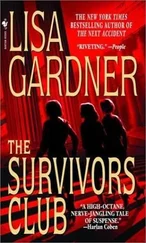“The gym coach,” D.D. filled in.
“That’s Greg. He’s a milieu counselor. We refer to the environment within our unit as the milieu. Greg’s job is to help sustain that environment-safe, nurturing, dynamic. Mine, too, but I’m an RN. MCs don’t need to have a degree, just a lot of energy and creativity to work with the kids.”
“What makes this a progressive unit?”
“We don’t snow kids-”
“‘Snow’?” D.D. interrupted.
“Drug them senseless. Most of our kids are on multiple prescriptions. Plus we use PRNs-medications given as needed, say Benadryl-to help soothe a child having a bad day. But we medicate to a functional, not nonfunctional, state.”
Danielle fiddled with the straw in her cup. When D.D. didn’t immediately ask another question, letting the silence draw out, the nurse volunteered on her own:
“We also refuse to physically restrain the kids. During an outburst, most psych units will resort to tying a kid to a bed. They tell the kid it’s for his own good, but it’s still a shitty thing to do. Let me put it this way: Once we had a five-year-old girl whose shoulders wouldn’t stay in their sockets because her parents’ idea of babysitting was to hog-tie her so they could go drinking. When the girl was finally admitted to the ER for severe dehydration, an intern ordered physical restraints because the girl kept freaking out. Can you imagine how that must’ve felt to her? She finally gets away from her parents, and she’s still being trussed up like cattle. Eighty percent of our kids have already suffered a severe trauma. We don’t need to add to that.”
D.D. was impressed. “So,” she summarized, “no snowing, no tying. When the kids go all Lord of the Flies, what d’you do?”
“CPS-collaborative problem-solving. CPS was developed by Dr. Ross Greene, an expert in explosive children. Dr. Greene’s primary assumption is that a child will do well if a child can do well. Meaning, if we have children who won’t do well, it’s because they don’t know how-maybe they have issues with frustration tolerance, or rigid thinking, or cognitive deficiencies. Our goal then is to teach the child the skills he or she is lacking, through CPS.”
D.D. considered this. Tried it on a couple of times, actually. She didn’t buy it. She glanced over at Alex, who appeared equally skeptical.
This time, he took the lead: “You’re saying a child goes psycho and you… talk her out of it? Hey, honey, please stop throwing a chair out that window. Now, now, Georgie, no more strangling baby Jane.”
Danielle finally cracked a smile. “Interestingly enough, most of our parents sound just as convinced as you. Example?”
“Example,” he agreed.
“Ten-year-old girl. Admitted with a history of explosive rages and petty arson. Within two hours of arrival, she walked up to Greg-the gym coach-and decked him. Didn’t say a word. Hit first, thought later.”
“What did Greg do?” D.D. asked.
“Nothing. Guy’s a good two hundred and twenty pounds and the girl barely topped seventy. Blow glanced off his stomach. Then she tried to kick him in the balls. That got him moving faster.”
Alex’s eyes widened. “But no snowing, no tying?”
“Two male counselors intervened, trying to guide the girl back to her room. She lashed out again, screaming at the top of her lungs. Other kids started getting wiggy, so our nurse manager ordered the male MCs to disappear. Second they were out of sight, the girl calmed down and returned peacefully to her room on her own.”
“It was the men who set her off,” D.D. filled in. “The girl had an issue with men.”
“Exactly. Large men with dark hair, who may or may not bear a resemblance to the girl’s stepdad, as a matter of fact. That’s what triggered her outburst. Observing that gave us something to work with. Something we would not have learned if we’d restrained her or medicated her.”
“All right,” Alex granted. “No snowing, no tying. But where’s the talking?”
“Once the girl calmed down, I reviewed the incident with her. We discussed what she did. I talked to her about other options for approaching boys that didn’t involve trying to kill them. It was an ongoing process, obviously, but that’s what we’re here for-to help kids understand what’s going on inside their heads, and what they can do to manage their jumbled emotions. Kids want to do well. They want to feel in control. And they’re willing to work, if you’re willing to guide.”
“Did the girl get better?” Alex asked.
“By the end of her stay, she and Greg were best buds. You’d never know.”
“And Ozzie Harrington?” D.D. said. “Was he another success story-one day roaring like a lion, next day gentle as a lamb?”
Danielle shuttered up. She sat back, stroking the top of the manila file with her thumb. When she met D.D.’s gaze again, her blue eyes were wary, but also hard. A woman who’d been there, and done that. Curious and more curious, D.D. thought.
“Tell me what happened,” the nurse said, avoiding D.D.’s question.
“Been watching the news?” D.D. asked.
“No. Been working the unit.”
“Why do you assume an unhappy ending?” D.D. pressed.
“Ozzie’s dead,” Danielle stated.
“Again, why assume the negative?”
“Because Karen told me to talk to you, and if Ozzie were still alive, answering your questions would violate his rights.”
D.D. considered the matter. “Yeah, he’s dead.”
“Just him, or did he hurt others?”
“Why don’t you tell us what you think?”
“Fuck it.” Danielle broke open the case file and began.

“Oswald was admitted in the spring of last year. He’d spent six months with his foster family before suffering a ‘psychotic break.’ The parents had gone out for the evening, leaving him and their two other children alone with a babysitter. Halfway through dinner, both their cell phones started ringing. The babysitter and two kids were now locked in the bathroom. Ozzie was on the other side of the door, armed with a hammer and screaming he was going to kill them.
“The parents ordered the babysitter to call nine-one-one, then headed home. They arrived around the same time two officers were wrestling Ozzie to the ground. The EMTs sedated the boy and brought him to the ER, which referred him to us.
“Upon admittance, he was nearly catatonic. We see this often in a child who’s just experienced a significant traumatic event. We kept him on Ativan for the first forty-eight hours, while we caught up on his patient history. Ozzie’s file revealed multiple diagnoses, including severe ADHD, attachment disorder, Nonverbal Learning Disorder, Mood Disorder NOS, and other nonspecific development delays. The psychiatrist expressed concern that, due to the death of Ozzie’s birth mother, not enough was known about the first three years of his life.”
“Meaning?” D.D. prodded.
“Ozzie’s speech and social skills were delayed. At eight, he showed some traits that were autistic in nature-he wouldn’t make eye contact, he sat and rocked for hours, while mumbling sounds only he understood.”
“You’re talking Rain Man?” D.D. clarified, making a note.
“That would be one example of an individual on the Autism Spectrum Disorder,” the nurse answered dryly. “Bear in mind, it is a spectrum, and you shouldn’t count on Hollywood for information. In Ozzie’s case, we determined the traits weren’t due to ASD, but were more consistent with the kind of self-soothing techniques learned by severely neglected children. Ozzie was a feral child.”
“So not Rain Man, but Tarzan?” Alex spoke up.
Читать дальше













